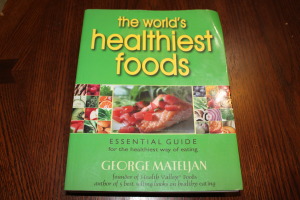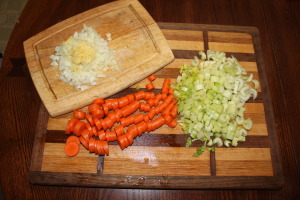Chicken soup, the age old recovery method from colds, flus, and tummy issues.
This lovely potion is generally made with chicken, celery, carrots, onions, garlic, salt and pepper. Often is is combined with a starch, rice or noodles, creating chicken noodle soup or chicken and rice. Chicken soup has typically been used to assist someone with getting out of bed and getting “back on their feet”.
When trying to answer the question of “Why chicken?”, we can look at the energetics of the animal. The chicken is spry, running or taking short flights all day, to get to her next meal, whereas the cow is a lumbering creature, usually not in a big hurry. When considering the energetic purpose, it is important to choose a chicken which was allowed to run around freely, pecking for food all day, rather than a white chicken that lived its life in the confines of a metal cage, unable to even turn around.
Celery contains vitamin C which is known for its immune boosting effects. It also contains coumarins which enhance the performance of certain white blood cells, allowing them to seek and destroy the unwanted invading pathogen that caused the illness. As this soup is for your health and to strengthen your immune system, it is important to choose organic, so that you are not adding unwanted toxins and chemicals. Look up the “dirty dozen” and the “clean 15”, to assist in deciding which foods should be purchased as organic. Carrots are a great source of carotenoids, the precursor to Vitamin A. which has long been known for its benefits to vision, but also supports the immune system.
Onions contain Vitamin C, quercetin and flavonoids, which work synergistically to kill pathogenic bacteria, a perfect addition to our soup. Garlic contains a sulfur compound called allicin which serves as an antibiotic, killing bacteria, fungi and viruses. Garlic also contains Vitamin C. An important note is to finely chop or mash the onion and garlic and allow to sit for 5-10 minutes prior to cooking. allowing their health promoting compounds to become heat stable.
Celtic sea salt, not table salt, contains magnesium, sodium and 60 trace minerals which serve to balance the electrolytes in the body and keep it hydrated. There is a nice article about the difference between table salt and real salt, Celtic sea salt or himalayan salt @ http://draxe.com/10-benefits-celtic-sea-salt-himalayan-salt/ (copy and paste into your search bar). Pepper, both black and cayenne help support the immune system. Black pepper contains piperin, a phytonutrient that has an antibiotic effect for many bacteria. Cayenne pepper contains capsaicin, a phytonutrient that breaks up mucus in the sinuses and lungs. It also contains beta-carotene, the precursor to Vitamin A, which supports the immune system.
The health benefits and nutritional information for these foods was found in “The World’s Healthiest Foods, Essential Guide For The Healthiest Way Of Eating” by George Mateljan.
A chicken soup recipe:
4-5 chicken thighs (humanely raised)
one onion (finely chopped)
three cloves of garlic (mashed)
four stalks of celery (chopped) (organic)
four carrots (whole or chopped)
1/2 stick of butter (organic)
1/2-1 tsp Celtic sea salt (more or less to taste preference)
sprinkle of pepper, black or cayenne or both (to taste preference, start slow and add more)
Enough filtered water to cover ingredients, more if you plan to add rice, noodles or quinoa
Chop onions and mash garlic, set aside. Place thawed chicken in pan, add carrots, celery, water, salt and begin heating at a medium to high heat. Add onions and garlic after they have set for 5-10 minutes. Bring to boil and turn heat down. Let simmer for 40 minutes. Sprinkle pepper in lightly, stir and taste. You can add more salt if needed. There is no subtraction, so start slow and gradually add until you achieve your taste preference. Pull chicken out with a slotted spoon or tongs, shred with a fork, remove the bone and add shredded chicken to the broth.


You may add noodles, rice or quinoa once the water is boiling. White rice and quinoa take 20 minutes to cook, Brown rice takes around 40 minutes. Noodles take around 8-10 minutes, longer if you like them very soft. Gluten free noodles can be substituted if you are sensitive to gluten, as most are, according to Dr. David Perlmutter in “The Grain Brain”.
